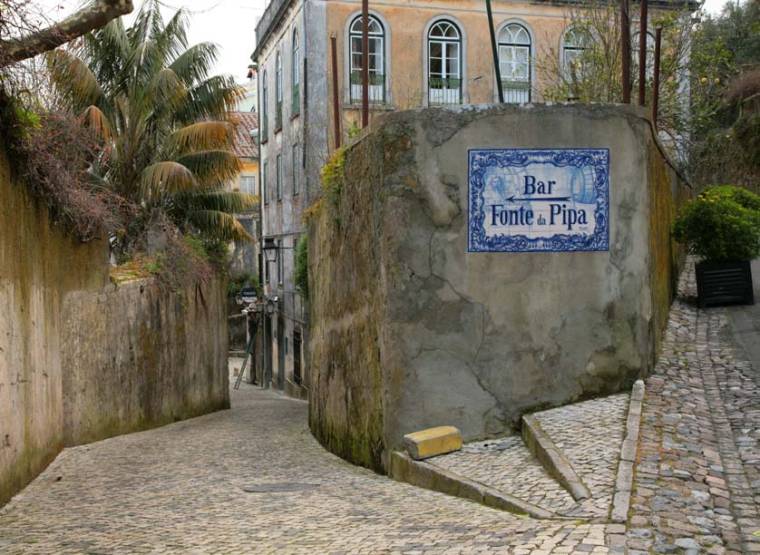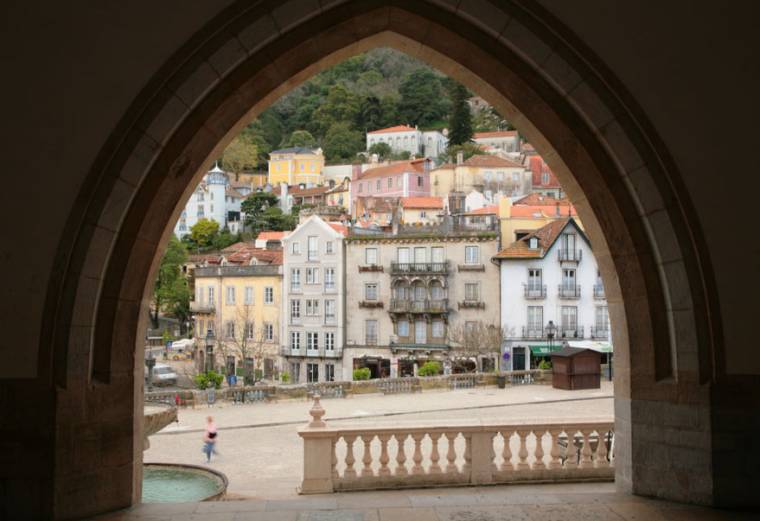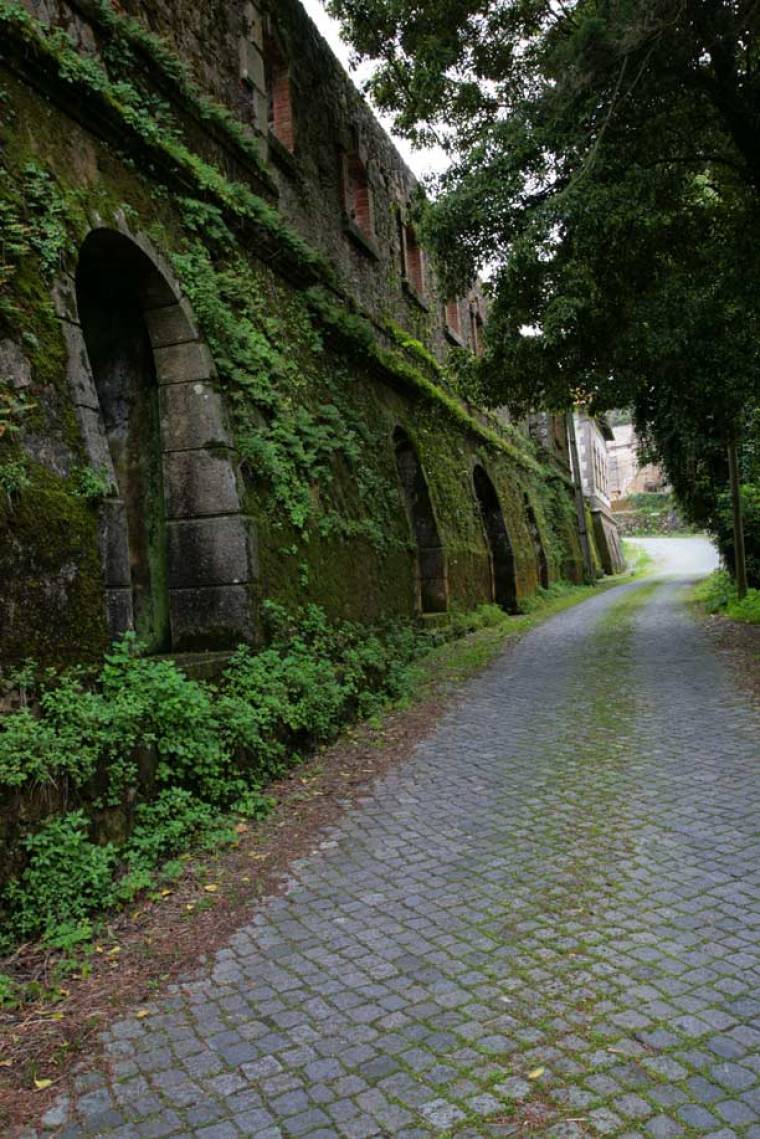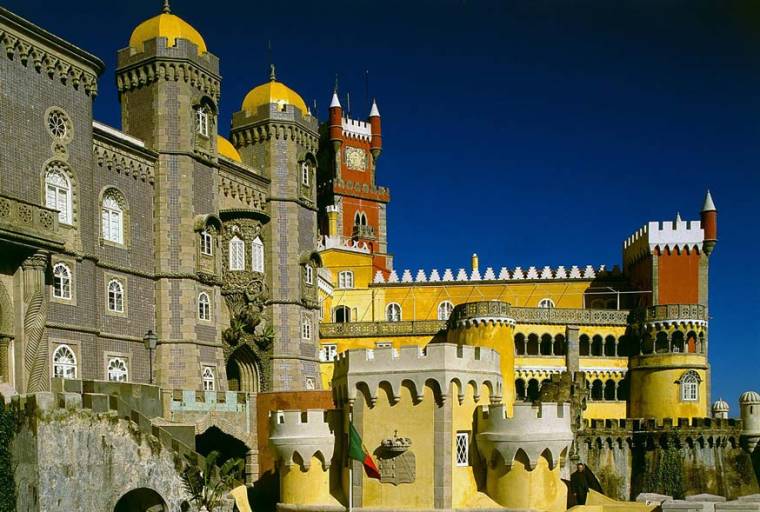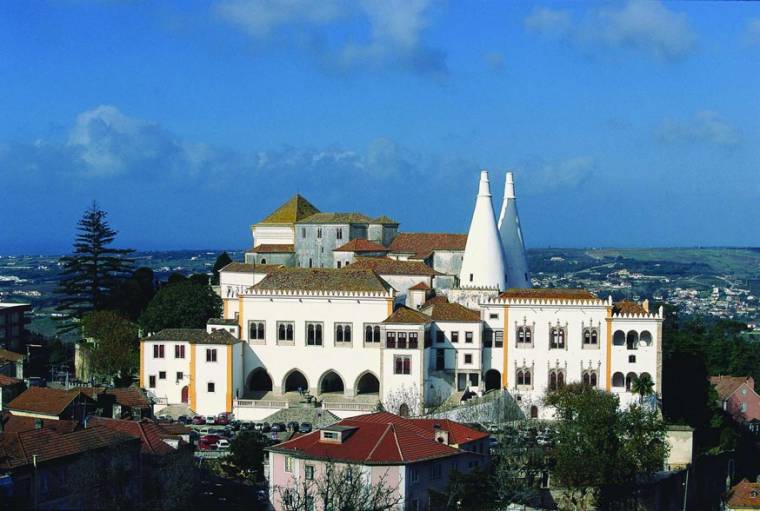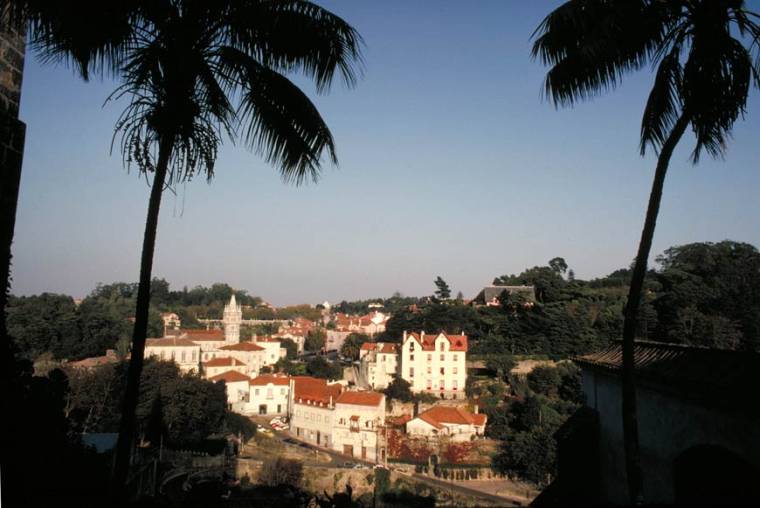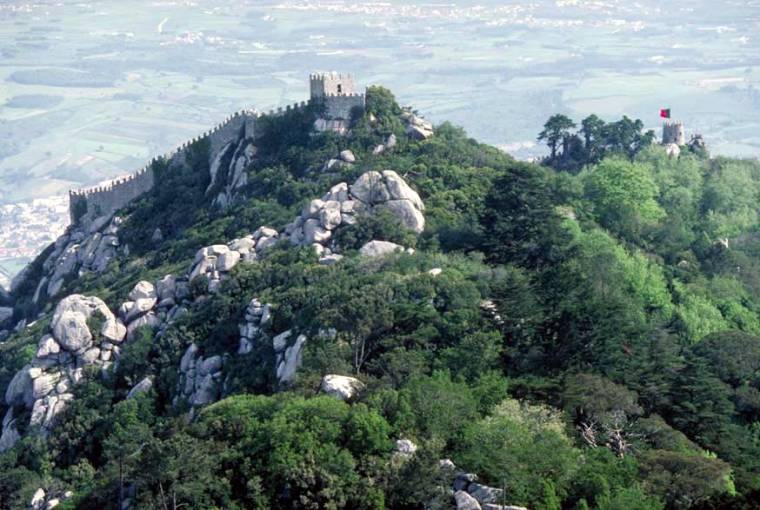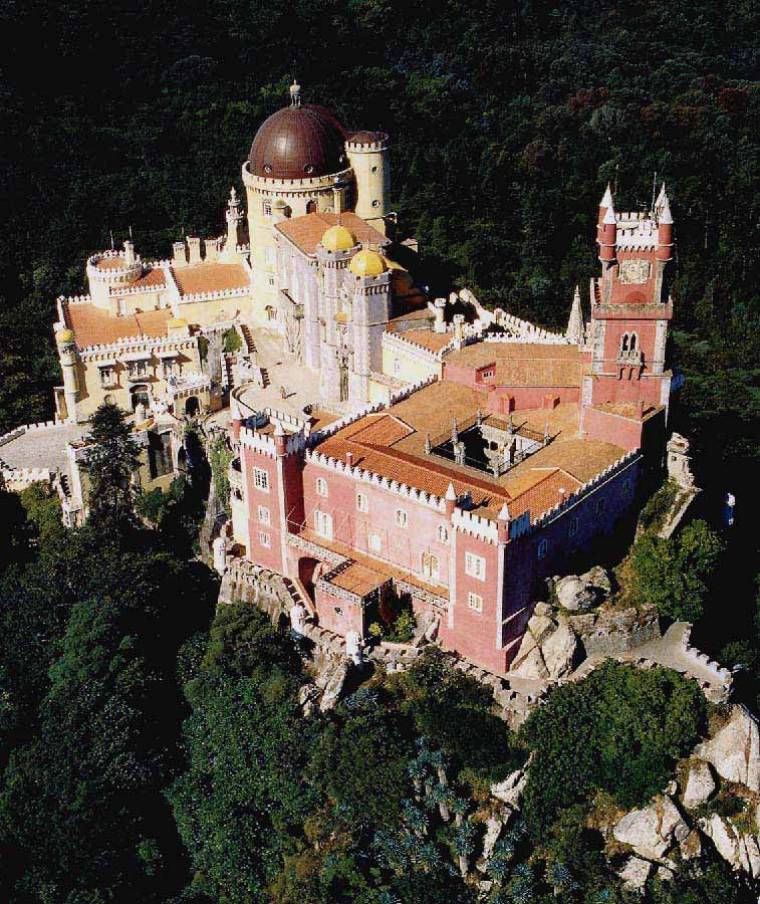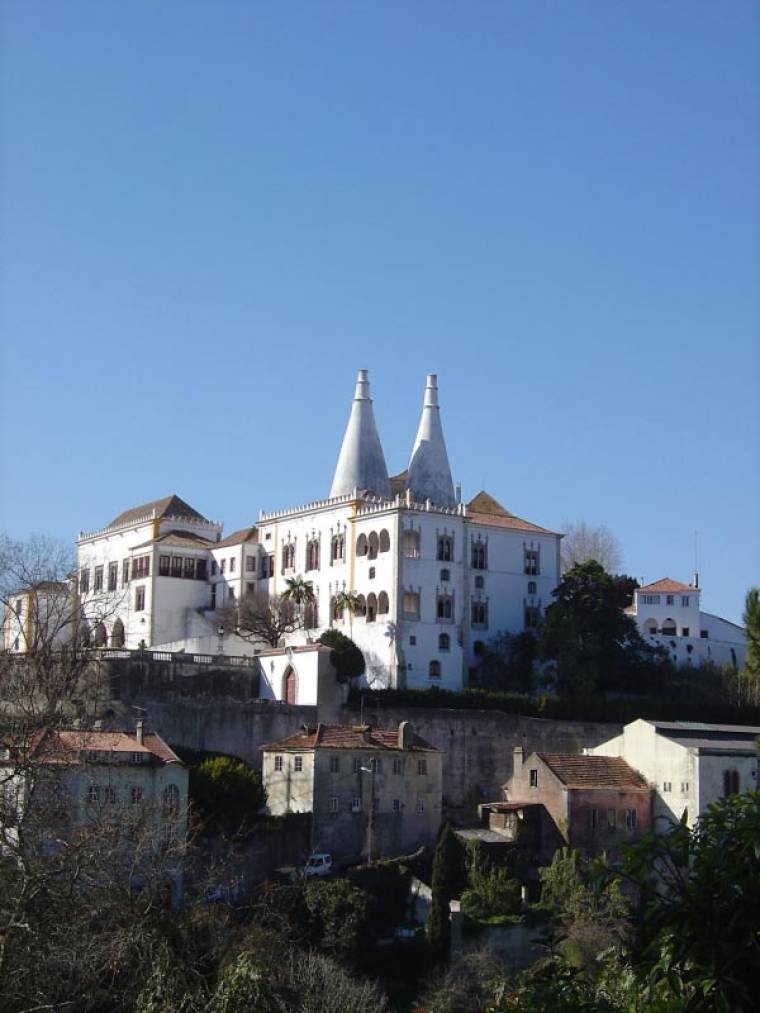Related images
Related images
Not sure what this old building near Santa Eufemia in Sintra is, but it was empty and very mossy
Related images
High up the hill in Sintra, somewhere near the Pena Palace is Santa Eufemia and this cross. On a clear day the view from here is spectacular, to Lisbon and beyond. This day it wasn't so great, but it's still fairly good
Related images
The extravagant, Disney castle like Pena Palace in Sintra.
Built in the 19th century to fulfill the romantic fantasies of Ferdinand de Saxe-Coburg-Gotha, the German husband of the then Queen Maria II.
It is located at a height of 1500 metres on the site of a 16th century Hieronymite monastery
photo: Jose Manuel
Related images
The National Palace started life in the 11th century and as since been remodelled and enlarged by successive residents.
Though mainly Manueline and Gothic in architecture, some of the original Moorish styling is still visible.
The two great spires are actually twin chimneys ventilating the kitchen
photo: Jose Manuel
Related images
A glimpse of the fairytale like town of Sintra that inspired the likes of Hans Christian Anderson and Portugal's own Luís de Camões.
The setting and architecture of Sintra are quite outstanding
Related images
Set high above the town of Sintra and commanding spectacular views to the coast is the 8th century Moorish Castle (Castelo dos Mouros)
The castle was restored to some degree under the reign of King Consort Fernando of Saxe Coburg-Gotha at the same time the Pena Palace was built
Related images
The fantastic, Disney like Pena Palace in Sintra.
Built in 1839 for Dom Fernando II it used the ruins of an existing Hieronymite Monastery as its basis. The styling draws on the castles of Barvaria but there is also a good deal of influence from the Moorish, Gothic and Manueline styles.
photo:
Related images
The Palacio Nacional (or Palacio Real) of Sintra was the summer residence of the kings of Portugal.
The palace was originally a Moorish castle but was rebuilt under Kings Dom Joao I and Dom Manuel in the 14th and 15th centuries in Gothic and Manueline styles.
The palace is now a museum.
photo: J Saraiva
